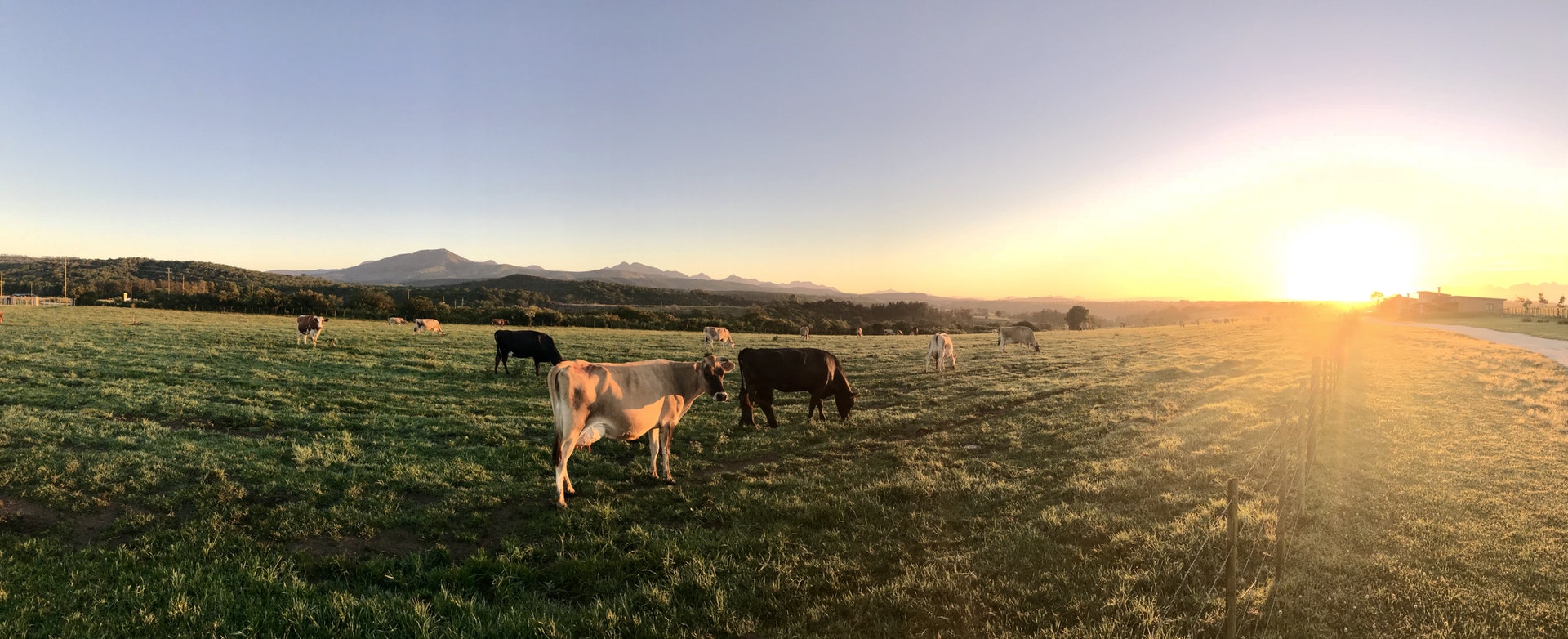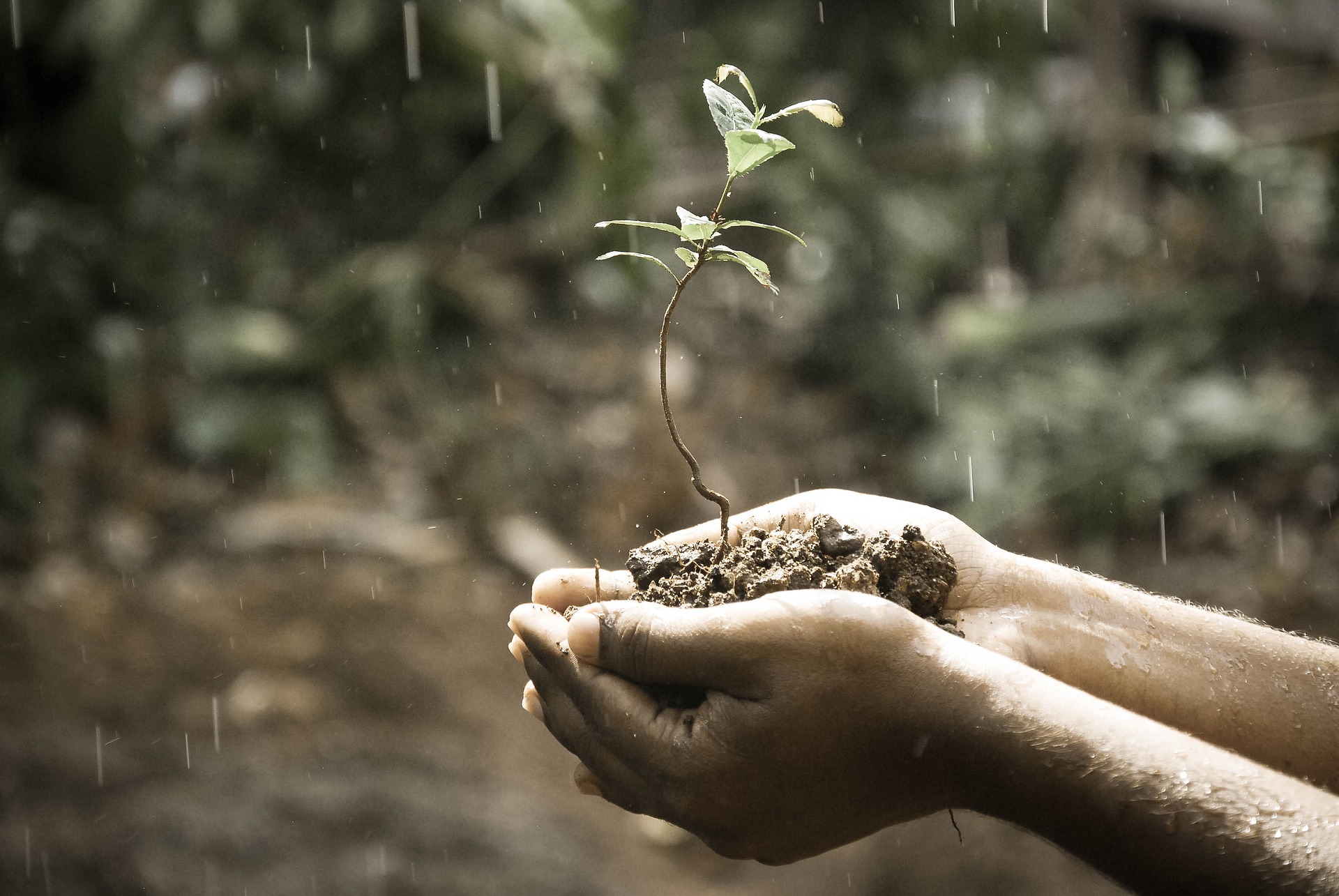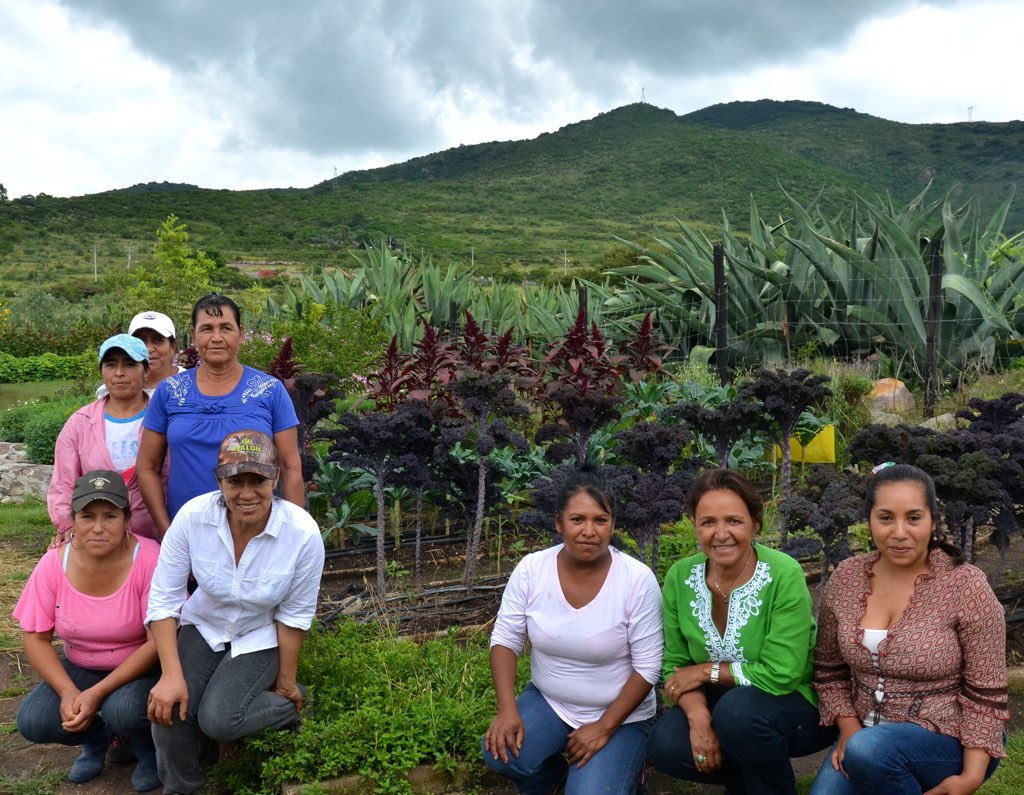Lire en FrançaisLire en Français
Leer en EspañolLeer en Español
De la Migración Forzada a la Regeneración: Carta Abierta a las y los Ciudadanos del Norte Global
Somos ya 82 millones de personas migrantes, en su mayoría del Sur Global, las que hoy vivimos en Europa y en los Estados Unidos.
A pesar de lo que lees en los medios, migrar es muchas veces nuestro último recurso. El despojo, la violencia de los gobiernos, la corrupción e impunidad estructural, la pobreza, la guerra y el cambio climático nos han forzado a dejar nuestras casas y nuestras tierras en los países de origen.
Estamos cansados de ser tratadas como ciudadanos de segunda clase, como amenazas a la seguridad de los países ricos. Estamos cansados de políticos corruptos y de los medios de comunicación que nos criminalizan.
Dejémoslo claro, aquí y ahora: Apoyamos el derecho de las personas a la migración voluntaria, y creemos en el valor de las comunidades diversas, pero la gran mayoría de nosotros preferiría no arriesgar su vida en los cruces fronterizos, ni en los mares ni a lo largo de rutas donde somos presas del crimen organizado coludido con agentes migratorios, policías y gobiernos; quisiéramos no enfrentar la discriminación y el maltrato cuando llegamos a lugares donde intentamos sobrevivir con nuestras familias.
Sin embargo, la dura realidad es ésta: No podemos regresar a casa –y la gran mayoría tendremos que seguir saliendo–, hasta que haya condiciones sociales, ambientales, políticas y económicas necesarias para que vivamos libres de violencia e inseguridad, hambre y desnutrición, con opciones de trabajo y educación para sustentar y lograr el bienestar de nuestras familias y comunidades.
¿Quién debería crear esas condiciones?, ¿Y cómo?
La economía extractivista basada en la industria ha causado demasiada presión sobre las tierras de las que antes dependíamos para alimentarnos. Nuestros suelos y ecosistemas han sido degradados a tal punto que han perdido su capacidad de resiliencia ante eventos climáticos extremos. Sin alimentos, sin esperanza, sin una economía al servicio de la vida, se nos fuerza a irnos.
El Norte Global y su modelo económico, es responsable de gran parte de las emisiones de gases de efecto invernadero que nos han llevado a la actual crisis climática, expresión de la crisis sistémica que afecta gravemente la sobrevivencia de millones de seres humanos, y pone en riesgo la vida en nuestro planeta.
Sin embargo, en el Sur Global estamos soportando el peso de la crisis, y de la incapacidad del mundo para abordarla. Somos las principales víctimas del cambio climático, pero si tuviéramos las herramientas necesarias también seríamos la mayor esperanza para revertirlo.
Estudios científicos demuestran que los suelos y bosques del Sur Global, manejados adecuadamente, tienen un enorme potencial para reabsorber el exceso de CO2.
Podemos regresar a trabajar en nuestras tierras en armonía con la naturaleza, reestabilizar el clima mundial y hacer de nuestros hogares lugares habitables – pero necesitamos de su cooperación.
Nuestros padres y madres, abuelos, abuelas y ancestros sabían cómo alimentarse manteniendo el equilibrio natural entre el CO2 de la atmósfera y el carbono en el suelo y los bosques.
Sabían cómo mantener un ambiente biológicamente sano y diverso y producir alimentos abundantes y nutritivos.
Hacían todo ésto sin usar químicos que desestabilizan el clima, sin usar semillas genéticamente modificadas y monocultivos.
Al acceder a este conocimiento, y al complementarlo con descubrimientos científicos modernos, podemos regenerar nuestros suelos– y transformarlos en el sumidero colectivo de carbono más grande del mundo.
Sólo así podremos regresar a casa y tener una vida digna junto a nuestras comunidades.
Sabemos que hay miles de millones de dólares disponibles para abordar la crisis climática global.
Hacemos un llamado a las personas y gobiernos del Norte Global para liberar esos fondos, la mayoría de los cuales están amarrados en gobiernos corruptos y agencias burocráticas.
Exigimos que se permita que esos fondos fluyan directamente a aquellos que estamos listos para regenerar nuestras tierras, nuestras granjas y nuestras comunidades – para el beneficio presente y para las futuras generaciones.
No estamos pidiendo caridad.Les estamos pidiendo que se hagan responsables de las consecuencias de sus acciones y estilos de vida. Les pedimos que cooperen con nosotros, que trabajemos juntos.
El Norte Global no tiene esperanza alguna de resolver la crisis climática sin abordar la vasta degradación de la tierra en el Sur Global.
Y nosotras(os), millones de migrantes que alguna vez dependimos de la agricultura para obtener nuestros alimentos y sustento, no podemos regresar o quedarnos en casa hasta que nuestros ecosistemas estén lo suficientemente sanos para mantenernos.
Es hora de comprometerse en unacampaña cooperativa a nivel global para regenerar la Tierra, y al hacerlo, regenerar nuestro bienestar social, económico y físico a nivel mundial.
Gracias.
Pedro Mariano Gómez Pérez
Patricia Pérez Gómez
Abraham Gómez Paciencia
Diego López Aguilar
Coalición Indígena de Migrantes de Chiapas
There are now 82 million migrants, mostly from the Global South, living in Europe and the United States.
Despite what you read in the media, for most us, migration is a last resort. We have been forced—by dispossession, poverty, war, climate change and government corruption—to leave our homes and land in our home countries.
We are tired of being treated as second-class citizens, as threats to the security of wealthy countries. We are tired of corrupt politicians and media that criminalize us.
Let us state clearly, here and now: We support the right of people to voluntarily migrate, and we believe in the value of diverse communities. But the vast majority of us would rather not risk our lives crossing borders, either over dangerous seas or along land routes where we are easy prey for agents of organized crime, often working in collusion with migration agents, police or governments. We would rather avoid discrimination and abuse when we arrive in foreign places, just trying to survive with our families.
However, the harsh reality is this: We can’t return home—and many more of us will have to keep leaving—until the social, environmental, political and economic conditions exist for us to live free of violence and insecurity, free of hunger and malnutrition, and until the employment and education conditions improve so that we can provide for our families and communities.
Who should create these conditions? And how?
The Global North, with its industrial-based, extractive economy, is responsible for most of the greenhouse gas emissions that have led us to this climate crisis which is threatening the survival of millions of people, and even life on Earth as we know it.
This economic model has put great pressure on the lands we used to depend on to feed ourselves. Our soils and ecosystems have been degraded to a point where they have lost their resilience in the face of severe climate events.
Without food, without hope, without an economy in service of life, we are forced to leave.
We in the Global South are bearing the burden of this crisis, and of the failure of the world to address it.
Yet, though we are the greatest victims of climate change, with the right tools, we are also the world’s greatest hope for reversing this crisis.
Scientific studies prove that the soils and forests of the Global South, managed appropriately, have the greatest potential to sequester excess CO2.
We can return to managing our lands in harmony with nature, so that we can re-stabilize the global climate and make our homes livable again—but we need your cooperation.
Our parents and grandparents and ancestors knew how to feed themselves while at the same time maintaining the natural balance between CO2 in the atmosphere and carbon in the soil and forests.
They knew how to maintain a biologically healthy and diverse environment while at the same time producing abundant, nutritious food.
They did all this without the use of climate-destabilizing chemicals and genetically engineered seeds and mono-cropping.
By tapping into this knowledge, and complementing it with modern scientific findings, we can regenerate our lands—and transform them into the largest collective carbon sink in the world.
Only then can we can return home, and live prosperous, dignified lives as we did in the past.
We hear that there are billions of dollars available to address the global climate crisis.
We call on the people and governments of the Global North to unleash those funds, the majority of which are tied up in corrupt governments and bureaucratic agencies.
We ask that those funds be allowed to flow directly to the people who are ready to regenerate our lands, our farms, and our communities—for the benefit of all of us now, and for future generations.
We are not asking for charity. We are asking for the Global North to take responsibility for the consequences of their actions and lifestyles.
We ask them to cooperate with us, to work together with us.
Global North has no hope of resolving the climate crisis without tackling the vast land degradation in the Global South.
And we, millions of migrants who once depended on agriculture to sustain us, cannot return—or stay—home until our ecosystems are healthy enough to sustain us.
It is time to commit to a massive global cooperative campaign to regenerate Earth, and by doing so, regenerate our collective global social, economic and physical well-being.
Thank you.
Lead authors:
Pedro Mariano Gómez Pérez
Patricia Pérez Gómez
Abraham Gómez Paciencia
Diego López Aguilar
On behalf of the Chiapas Indigenous Migrant Coalition (Coalición Indígena de Migrantes de Chiapas)
Signees:
Viridiana Alcántara Cervantes—Iniciative 4 por 1000 Bonn
Miguel Concha Malo—Centro de Derechos humanos “Fray Francisco de Vitoria, O.P., A.C.—Distrito Federal
Arturo Vera Tenorio—Mercado Alternativo de Tlalpan Ciudad de México
Carlos Villablanca—Ecobarrio 4 Alamos Santiago
Guadalupe Meza Docente—Universitaria Guanajuato
Sara Román—Red Nacional Género y Economía (REDGE)—Benito Juarez
Rocío Miranda—Ciudad de México
Luz Maria Munoz de Cote—Mitoteras por Guanajuato—Guanajuato
Rocío Servin—Guanajuato
Pedro Luis del Ángel Rodríguez—Guanajuato
Rosario Patricia Rodríguez— R Ninguna—León
Paco Ayala—La Cuadra A.C. Huerto Roma Verde—Ciudad de México
Tania Salazar—Mexico
María Soledad Del Rocío Suárez López—Delegación Miguel Hidalgo—Mexico, D. F.
Eveline Woitrin—Rescatando los Picachos—Guanajuato
Ercilia Sahores—Regeneration International—Mexico City
Peter Mokaya—Organic Consumers Alliance(OCA)—Nairobi Kenya
Maina Azimio Azima—Wellness Consultants—Nairobi Kenya
Omoke Brian—Think Organic—Nairobi Keyna
Julie Ngigi—Spur Africa LTD Nairobi—Nairobi
Sulemana Abudulai—African Biodiversity Network—Tamale
Anne Mugo—Teacher—Nairobi
Boniface Njoroge—Bonafied Organic Ventures—Nairobi
Luse Kakunta—Unza—Lusaka
Emanuel Chibesakunda—Plant A Million Zambia—Lusaka
Fortunate Nyakanda—Zimbabwe Organic Producers and Promoters Trust—Harare
Alfred Lakwo—AFARD Nebbi—West Nile
Innocent Lawoko Muno—UNHCR Yumbe—West Nile
Ronnie Cummins—Via Organica—San Miguel de Allende, Guanajuato
Roger Jones—RasX—San Miguel de Allende, GTO
Christiaan Verdegaal—Amsterdam
Fouad Yammine—Beirut
Temor Al-karawi—Eitorf
Alejandro Calvillo El—Poder del Consumidor A.C.—Ciudad de México
Adelita San Vicente Tello—Semillas de Vida—México
Azucena Mastache—Cuernavaca Morelos
Fray Gonzalo Ituarte OP—Vicaría de Justicia y Paz—San Cristobal de Las Casas
Alfredo Rubin—Red Semillas de Libertad—Buenos Aires
Barbara Icaza—Ciudad de México
Natasha Uren—Coalición de Migrantes Mexicanos—CDMX
Angélica Schenerock—Agua y Vida: Mujeres, Derechos y Ambiente AC—San Cristóbal de Las Casas
Joel Tovar—AccionMasVerde—Ciudad de México
Ellen Farmer—Collaborative Ventures—Santa Cruz
Amber Rappe—OCA—Finland
Meg—San Francisco
Ashleigh Brown—Ecosystem Restoration Camps—UK
Stefan Meyer—OCA AgroEcology Center—Finland
Kristine Bartyzel—Santa Fe
Florence Reed—Sustainable Harvest International—USA
Daniela Howell—Savory
Claudia Flisfisch—Regeneración Internacional—San Cristóbal de Las Casas
Michaela Fohmann—Schliengen
Richman Mutono—African Centre for Migration and Society—Wits University Johannesburg
Eirian Sahinkaya—Cologne
Carlos Flores—Mexico
Laura Izela Loredo Ruelas—Mexico City
Alicia Silva—Mexico
Angélica Gómez—Fondo Semillas—Ciudad de México
Wiliams Alonso Landaverry—Organización Democrática Mundial Copan—Honduras
Isabel de la Lastra—Taramundi—Asturias
Dana Stockar—Organizacion Walung Curarrehue—Araucanía—Chile
Oscar Gerardo Vargas López—IMDEC, AC—Guadalajara, Jalisco
Mariana Ortega Ramírez—Agromás S.C.—Cuautepec de Hinojosa—Hidalgo
Aurelia Nashru—Red Xotlac Amecameca—México
Natalia Lopez—Cooperativas Sin Fronteras—San Pedro—San José
Lena Bartula—Ser Mujer—San Miguel de Allende—Mexico
Laia Borges—Barcelona—Spain
Pilar Quintanilla—San Miguel de Allende—México
Fintan Lethert—Organic Consumers Association—Minneapolis—Minnesota
Henry Anton Peller—Ohio State University—Punta Gorda—Belize
Stephanie Bourdin—Paris—France
Monica Baxter—Olympia—USA
Sallie Latch—Center for Global Justice—Mexico
Judith D Schwartz—Vermont—United States
Deborah Richmond—Rewilding our Planet—England
Kathleen Arbonne—Spokane—United States
Rachel Kastner—San Miguel De Allende—Mexico
Ben Radler—Würzburg—Germany
Bernd Müller—Global Ecology Institute—Portugal
Nat B Life—Antwerp—Belgium
Pedro Leal—Portugal
Andres Balzo—Santiago de Chile—Chile
Aurora Paisim—San Pedro de Atacama—Antofagasta—Chile
Alexis Baden-Mayer—Citizens Regeneration Lobby—Washington DC
Eirian Sahinkaya—Cologne—Germany
Rebecca Bailet—Albuquerque—United States
Mia Smith—Honolulu—United States
Mathilde Berguerand Aucune—Limans—France
Ianka Mosimann—Undervelier—Suisse







